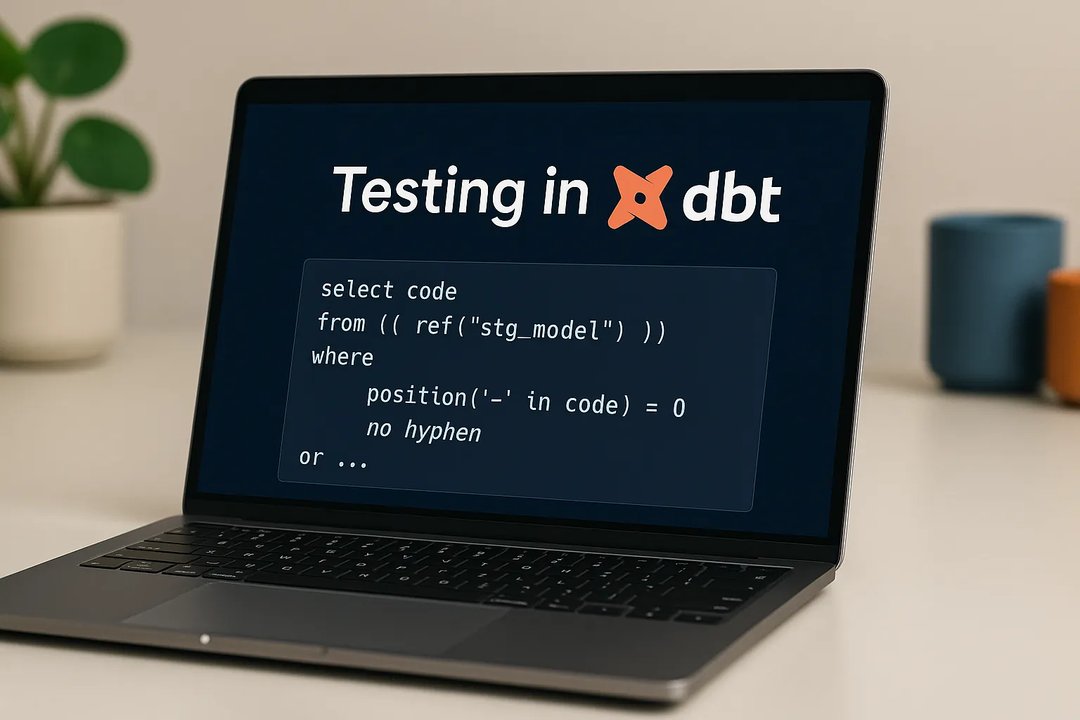
Michał Nakoneczny
18 January 2023, 11 min read

What's inside
- Idea 1: Fat Models
- Idea 2: Putting Business Logic in Views/Forms
- Idea 3: Services
- Idea 4: QuerySets/Managers
- Contact us
Let’s discuss a different approach to organizing business logic code in Django Projects. I've been toying with it for a while now – it's still work-in-progress, so I look forward to your thoughts and comments.
Let's start with the basics: the business logic layer (as I will be using during this presentation) is a layer in a piece of software that encodes real-world rules that determine how data is created, displayed, stored, and changed. It's linked to the primary business problem your software aims to solve.
The business logic layer prescribes how business objects interact with one another and defines the methods by which these objects can be updated.
So, where do we put business logic in Django?
Here are four possible solutions with their pros and cons.
Idea 1: Fat Models
The “default” idea supported by Django documentation is to make your models “fat.”
This approach suggests that it's best to put it in the model if you don’t know where some of the code should go and somehow relate to the object (and what doesn’t?).
The idea – often presented as a typical pattern in MVC-style programming – is to build thick/fat models and thin controllers. In Django, that translates to thick models with lots and lots of small methods and thin views which use those methods and keep their logic as minimal as possible.
Why adopt this approach? Here are three reasons:
- It keeps your code dry – rather than repeating code in views or forms, you put everything into the model, and since you might have many views or forms manipulating the same models, you get to keep your code dry. That's a common opinion, but I'm not sure about it – more on that later.
- It's testable – breaking up logic into small methods in the model makes your code easier to unit test.
- Readability – because it’s testable, object-related code is also easy to comprehend. By giving your methods familiar names, you can abstract ugly logic into something easy to read and understand.
Example:
Let's say your task is building a company blog. Your code could look like this:
class Post(Model):
STATUS_DRAFT, STATUS_APPROVED, STATUS_PUBLISHED = range(3)
STATUS_CHOICES = (
(STATUS_DRAFT, _('Draft')),
(STATUS_APPROVED, _('Approved')),
(STATUS_PUBLISHED, _('Published'))
)
title = models.CharField(max_length=255)
text = models.TextField()
status = models.PositiveSmallIntegerField(
choices=STATUS_CHOICES,
default=STATUS_DRAFT
)
Note the statuses in the code (DRAFT, APPROVED, PUBLISHED). Consider the business logic now: Someone may ask you to implement a functionality to prevent blog posts that a supervisor hasn't approved from being published automatically.
So you'll probably write something like that:
class Post(Model):
...
def approve(self):
self.status = Post.STATUS_APPROVED
self.save()
def publish(self):
if self.status != Post.STATUS_APPROVED:
raise PostInvalidStatusError()
self.status = Post.STATUS_APPROVED
self.save()
It's small and pretty straightforward – suitable for a blog. And look how readable it is. If someone new came on board and had to deal with that code base, your intention would be apparent to that person.
But the method also has its cons: having a more extensive system may lead to comprehensive models in your Django apps. That method is hard to maintain in large codes and can result in poorly optimized solutions (like sub-optimal database queries or network requests, which I will discuss later).
Have a look at our blog to learn more about building Django models.
Idea 2: Putting Business Logic in Views/Forms
Another idea is to place business logic in forms or views.
Though I’ve seen it being seriously suggested, I don’t think putting business logic in forms, views, or serializers is a neat idea.
I don’t mean that you shouldn’t put any logic there; for example, logic related to dynamic order modification or user preferences works fine here. But the logic associated with placing an order, saving a blog post, or validating the status of a blog post inside a form is a silly idea.
The main reason is the minuscule chance that the form, view, or serializer will ever serve as the only entry point of that particular scenario. While you might only have one form and view for editing blog posts at the moment, you’re making future designing API or accessing and manipulating your blog posts through management commands, background tasks, or anything else unnecessarily tricky.
Just don’t do that.
Idea 3: Services
Another commonly advocated idea is that it's worth adding a separate layer of code called services between views and models. That is quite unusual in a vanilla Django system, but some projects successfully employ that method.
The idea is that you divorce your models, leaving only the definitions of your objects and their relations to other objects from your services or actions of behaviors (sometimes it’s called differently), where you put what the objects can do or what you can do with them.
An immediate positive consequence of that approach is that one object of a particular kind is no longer an action's default domain or scope. Instead of approve_post(post), we could equally easily have approve_posts(posts) accepting a set of commands rather than one post.
Or, we could have a bundle_sold_products() behavior that takes a subset of products bought by one client and bundles them in one shipment. The idea is that you no longer need to worry whether a function is more naturally defined as a method on model A or model B because there might be real-world examples that are neither.
Here's an example:
def approve_post(post):
post.status = Post.STATUS_APPROVED
post.save()
def publish_post(post):
if post.status != Post.STATUS_APPROVED:
raise PostInvalidStatusError()
post.status = Post.STATUS_APPROVED
post.save()
You've got two simple methods in front of you that capture different actions. In our case, it's post-approval and the business logic behind the new post-publication.
However, there are still some disadvantages to this approach.
First, the cognitive load involved in coming up with that code is considerable, and the process may not be clear to everyone.
The only advantage of that approach is taking a long file and cutting it into several medium/short files. It won’t force you to consider sub-optimal solutions – which I care about when putting business logic into code.
To sum up:
I think the idea is pretty good. It's testable and, depending on how you do it, readable. However, that comes at a price: a lack of structure that comes with large code bases – there's simply not much agreement right now about how to structure services in Django.
Idea 4: QuerySets/Managers
The main idea that I wanted to talk about in this piece is very simple:
I think we’re mistaken in implicitly thinking that we call actions/behaviors functions of just one object.
I believe that to be a false and very limiting assumption. I guess it stems from the object-oriented paradigm of which I’m a huge advocate, but it is nonetheless false.
The inspiration for this idea came from my realization that, more often than not, we end up implementing batch actions, be that an MVP for a startup or a new feature for a large legacy system.
So returning to our blog example, imagine that your corporate blog is now a success and more people start using your app. The supervisors request the possibility of approving posts in batches rather than clicking the approve button on each individual.
You could implement that in many ways: you can just execute a MultipleObjectUpdateView, write a serializer for a set of objects, or if your frontend talks to the backend through an API, you can use Django Admin actions… all of that doesn’t matter. What matters is that implementing the methods on querysets/managers rather than Models would allow for more efficient queries. If you don’t, you either run into a lot of repeated code or you run unoptimized queries.
The idea is to implement the approve() and publish() methods on the queryset/manager rather than on the Model and to treat the case of supporting or publishing one blog post as a particular case of approving or publishing n blog posts, simply.
I’m saying queryset**/managers because in Django you can quickly get one from the other, e.g., defining a** queryset but then calling the as_manager(). For different reasons, I think that queryset is a slightly better solution, but it’s a minor thing.
So here's what it looks like:
class PostQuerySet(QuerySet):
def approve(self):
return self.update(status=Post.STATUS_APPROVED)
def publish(self):
return self.filter(status=Post.STATUS_APPROVED).update(
status=Post.STATUS_PUBLISHED)
class Post(Model):
...
objects = PostQuerySet.as_manager()
Remember how I doubted whether locating methods in models brings us dry code?
Well, I think that in most projects – whether you're working on building a startup or joining a large legacy system – sooner or later, someone will come up with a request to enable batch actions. If you use the model approach, you can either:
- leave the code in the models and duplicate the code on the queryset level;
- loop over instances and save them individually.
Now, if you started working with queryset/managers, you're covered right from the start.
Looking at the criteria, I tried to evaluate previous approaches. This idea comes out pretty good because it’s:
- Testable - if you know how to test models and you know how to use querysets, you know how to test querysets, period.
- Readable - I believe that the readability is on a par with fat models: when I read a PostManager class or a PostQuerySet class, I know I’m talking about things to do, filtering and manipulating collections of Posts.
- DRY - I like the idea better than custom service classes. Querysets are used very often in the Django framework. You use querysets when limiting the scope of generic views, working with permissions, or writing Django admin actions! They’re everywhere.
- Optimized - querysets are built with collections of objects in mind. Rather than looping over a set of Posts, setting each status, and saving them individually, which would take n updates, you can issue just one query. This is possible in most data models, provided you use a relational database.
But no approach is perfect, and this one has some disadvantages as well – it makes checking business rules a bit more complicated, and integrations may become more complex.
First, checking business logic when bearing only one Post in mind is simple: you either publish the post if approved or raise an exception if it’s still a draft. With sets of Posts, that becomes complicated because you might get a set of objects with different statuses.
In principle, you will want to employ two general strategies:
- In some cases, you will want only to update those objects that conform to the rule. For example, there is no harm in publishing only five posts, even if a set of 10 was passed on to a corporate blog. Just inform the user that you published 5 out of 10 posts they asked for, say they need to work on the remaining ones, and you’re good.
- Sometimes, you will want to fail early if not all passed objects conform to the rule. For example, there is no point in booking the user’s journey if only 2 out of three three airplane tickets are available.
A general rule I came up with is that case 1 applies to circumstances that only update the individual passed objects without modifying or creating a related entity. For example, you only change the status field of n Posts, but it does not affect anything else.
Case 2 will generally apply when the action modifies or creates some related objects. There is no point in compiling a subset of passed Posts if you build an ebook out of them.
Still, your mileage will vary.
Second point – integrations. As I said, this approach works nicely with atomicity and transactions provided by relational databases. But what if you need to communicate with an external service?
Again, you might run into one of three general scenarios:
- You're in luck if you’re a service with a mature, robust API that allows for batch actions. Not only is there very little you need to do, but the queryset/manager approach will potentially save you not only from unoptimized DB queries but also network requests. A lot of APIs do that. You can submit a batch of payments to PayPal. You can submit a bunch of emails to Sendgrid or Mailgun, etc.
- If the external service does not accept batch actions, but a rollback is possible and is not costly, then you can try and request the individual actions, and if all of them succeed, you can go ahead and update your DB in one go. If one of them fails, you can roll back the previous ones.
- You're doomed. But at least you're not doomed by the queryset approach. You default to calling the action in a loop for every object. That sums up my take on organizing business logic code in Django projects.
Contact us
At Sunscrapers, we have a team of developers and software engineers with outstanding technical knowledge and experience. We can build your project successfully.
Talk with us about hiring Python and Django developers and work with the best. Sunscrapers can help you make the most out of Python, Django, and other technologies to take your project to the next level.


